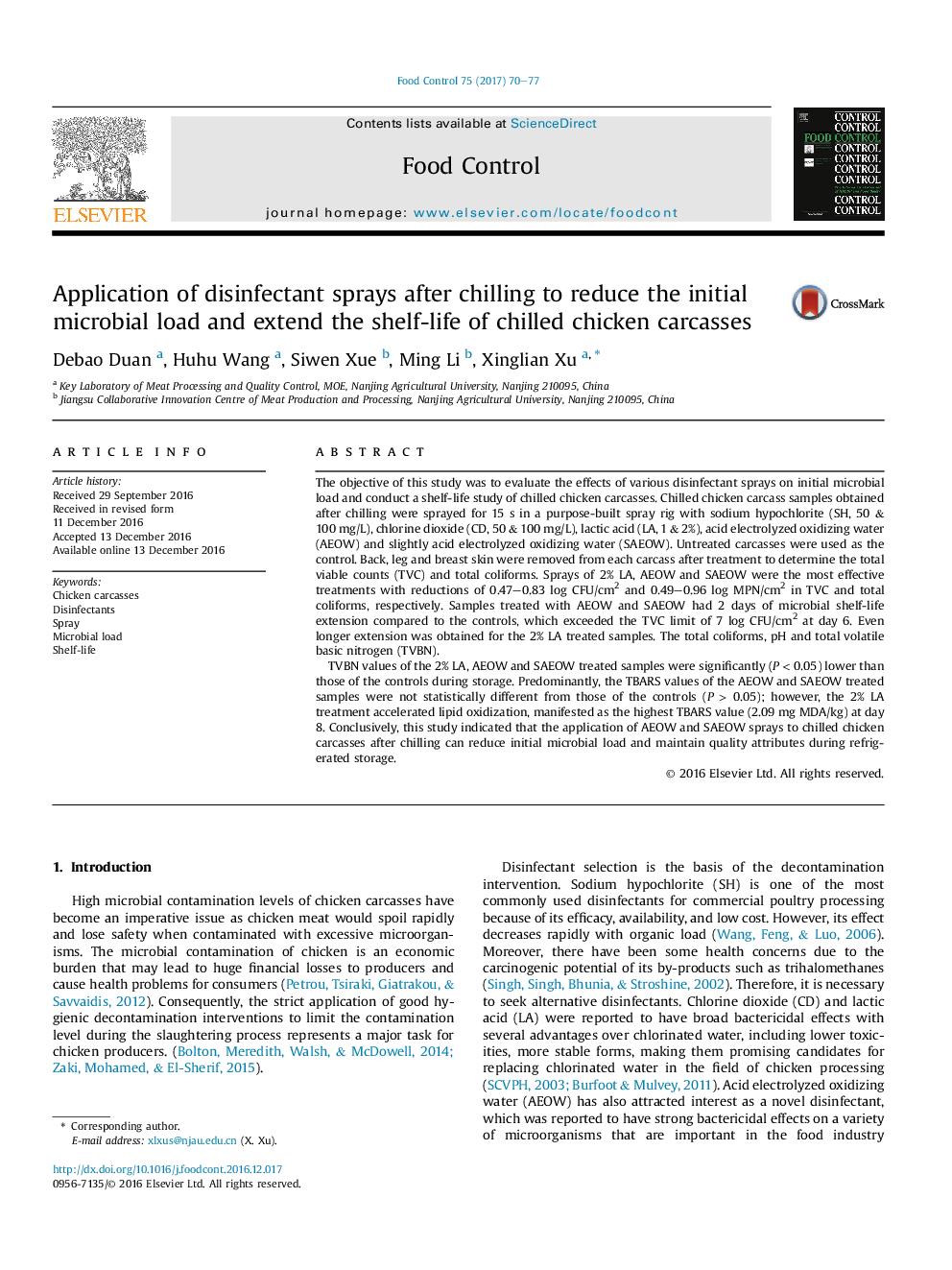| Article ID | Journal | Published Year | Pages | File Type |
|---|---|---|---|---|
| 5767392 | Food Control | 2017 | 8 Pages |
â¢Various disinfectant sprays after chilling were applied on chilled chicken carcasses.â¢2% LA, AEOW, and SAEOW sprays predominantly reduced the initial microbial load.â¢AEOW and SAEOW sprays can maintain better storage qualities and extent 2 days of carcasses shelf-life.
The objective of this study was to evaluate the effects of various disinfectant sprays on initial microbial load and conduct a shelf-life study of chilled chicken carcasses. Chilled chicken carcass samples obtained after chilling were sprayed for 15Â s in a purpose-built spray rig with sodium hypochlorite (SH, 50 & 100Â mg/L), chlorine dioxide (CD, 50 & 100Â mg/L), lactic acid (LA, 1 & 2%), acid electrolyzed oxidizing water (AEOW) and slightly acid electrolyzed oxidizing water (SAEOW). Untreated carcasses were used as the control. Back, leg and breast skin were removed from each carcass after treatment to determine the total viable counts (TVC) and total coliforms. Sprays of 2% LA, AEOW and SAEOW were the most effective treatments with reductions of 0.47-0.83 log CFU/cm2 and 0.49-0.96 log MPN/cm2 in TVC and total coliforms, respectively. Samples treated with AEOW and SAEOW had 2 days of microbial shelf-life extension compared to the controls, which exceeded the TVC limit of 7 log CFU/cm2 at day 6. Even longer extension was obtained for the 2% LA treated samples. The total coliforms, pH and total volatile basic nitrogen (TVBN).TVBN values of the 2% LA, AEOW and SAEOW treated samples were significantly (PÂ <Â 0.05) lower than those of the controls during storage. Predominantly, the TBARS values of the AEOW and SAEOW treated samples were not statistically different from those of the controls (PÂ >Â 0.05); however, the 2% LA treatment accelerated lipid oxidization, manifested as the highest TBARS value (2.09Â mg MDA/kg) at day 8. Conclusively, this study indicated that the application of AEOW and SAEOW sprays to chilled chicken carcasses after chilling can reduce initial microbial load and maintain quality attributes during refrigerated storage.
